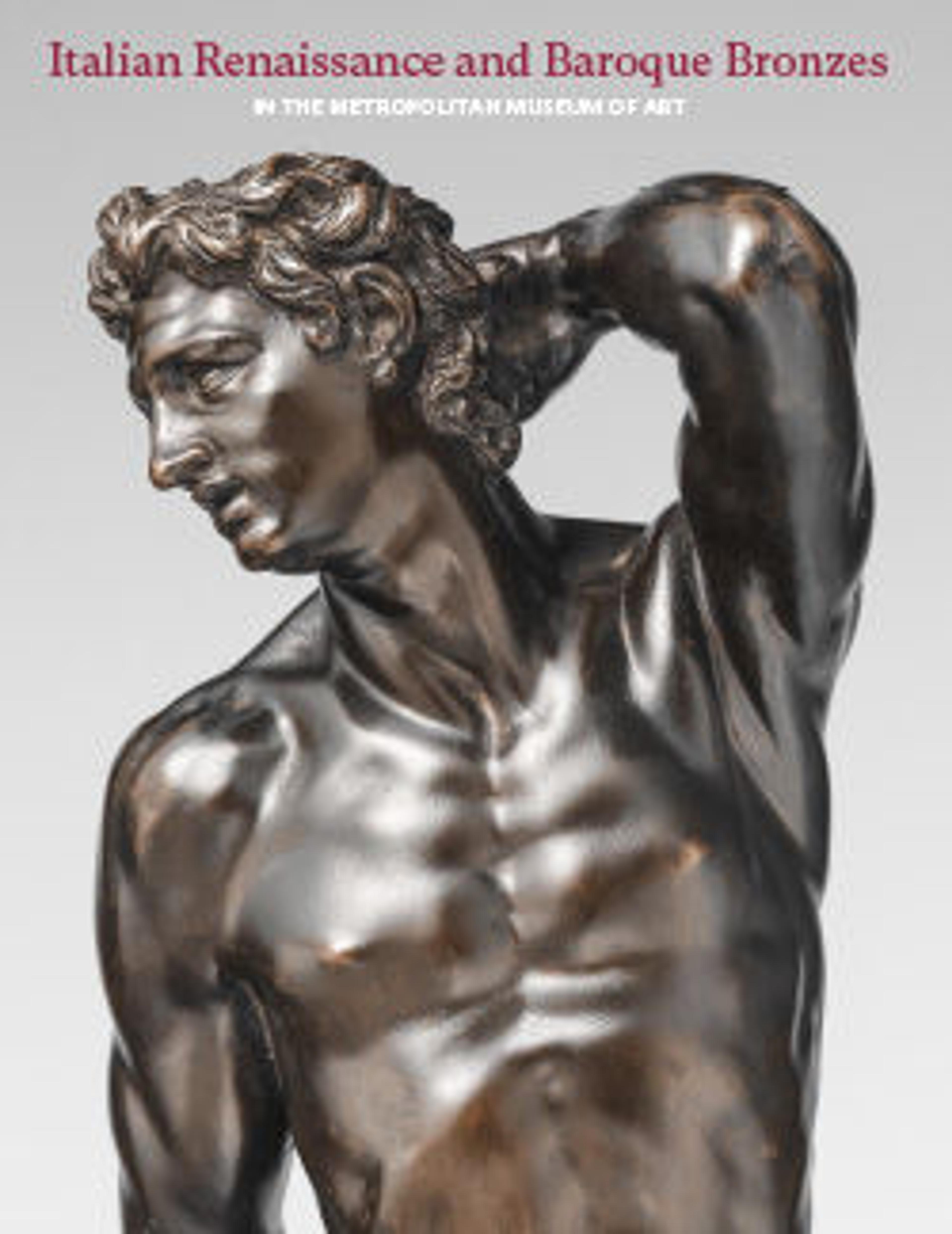Venus
The pose derives from the ancient marble known as the Venus de’ Medici (see cat. 176). Replicas of this famous statue were popular among Grand Tour collectors, and this bronze was likely cast for such a market in early nineteenth-century Rome, though the size, larger than the typical souvenir, raises questions about its intended function. The bronze was cast in sections, and a repair is visible on the left forearm. The overall execution is middling, with little to distinguish a specific hand or workshop, though at the time of acquisition the individualized character of the face suggested a connection to the “type of Zoffoli or Righetti.”1 If anything, there is an abstract, smooth quality to the musculature that anticipates the twentieth century.
The statuette was promised to the museum by the socialite and philanthropist April Axton in 1961, though it did not officially enter the collection until 2001. Axton sat for a portrait by the painter Massimo Capigli in Rome in 1953. Perhaps she acquired the Venus during that trip.
-JF
Footnotes
(For key to shortened references see bibliography in Allen, Italian Renaissance and Baroque Bronzes in The Metropolitan Museum of Art. NY: The Metropolitan Museum of Art, 2022.)
1. See the report of a gift, ESDA/OF, February 22, 2001.
The statuette was promised to the museum by the socialite and philanthropist April Axton in 1961, though it did not officially enter the collection until 2001. Axton sat for a portrait by the painter Massimo Capigli in Rome in 1953. Perhaps she acquired the Venus during that trip.
-JF
Footnotes
(For key to shortened references see bibliography in Allen, Italian Renaissance and Baroque Bronzes in The Metropolitan Museum of Art. NY: The Metropolitan Museum of Art, 2022.)
1. See the report of a gift, ESDA/OF, February 22, 2001.
Artwork Details
- Title:Venus
- Date:early 19th century
- Culture:Italian, probably Rome
- Medium:Bronze
- Dimensions:Height wt. on socle confirmed: 19 1/8 in., 41.4 lb. (48.6 cm, 18.8 kg)
- Classification:Sculpture-Bronze
- Credit Line:Gift of April Axton, 1961
- Object Number:61.95
- Curatorial Department: European Sculpture and Decorative Arts
More Artwork
Research Resources
The Met provides unparalleled resources for research and welcomes an international community of students and scholars. The Met's Open Access API is where creators and researchers can connect to the The Met collection. Open Access data and public domain images are available for unrestricted commercial and noncommercial use without permission or fee.
To request images under copyright and other restrictions, please use this Image Request form.
Feedback
We continue to research and examine historical and cultural context for objects in The Met collection. If you have comments or questions about this object record, please contact us using the form below. The Museum looks forward to receiving your comments.
